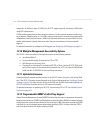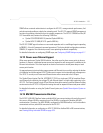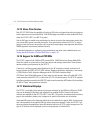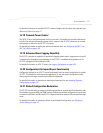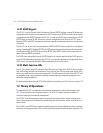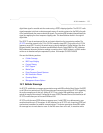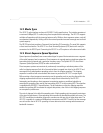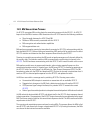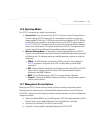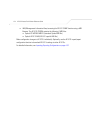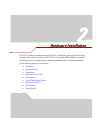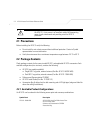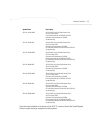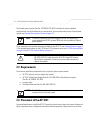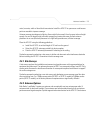
AP-5131 Access Point Product Reference Guide
1-22
1.3.5 MU Association Process
An AP-5131 recognizes MUs as they begin the association process with the AP-5131. An AP-5131
keeps a list of the MUs it services. MUs associate with an AP-5131 based on the following conditions:
• Signal strength between the AP-5131and MU
• Number of MUs currently associated with the AP-5131
• MUs encryption and authentication capabilities
• MUs supported data rate
MUs perform pre-emptive roaming by intermittently scanning for AP-5131’s and associating with the
best available AP-5131. Before roaming and associating, MUs perform full or partial scans to collect
AP-5131 statistics and determine the direct-sequence channel used by the AP-5131.
Scanning is a periodic process where the MU sends out probe messages on all channels defined by
the country code. The statistics enable an MU to reassociate by synchronizing its channel to the
AP-5131. The MU continues communicating with that AP-5131 until it needs to switch cells or roam.
MUs perform partial scans at programmed intervals, when missing expected beacons or after
excessive transmission retries. In a partial scan, the MU scans AP-5131’s classified as proximate on
the AP-5131 table. For each channel, the MU tests for Clear Channel Assessment (CCA). The MU
broadcasts a probe with the ESSID and broadcast BSS_ID when the channel is transmission-free. It
sends an ACK to a directed probe response from the AP-5131 and updates the table.
An MU can roam within a coverage area by switching AP-5131s. Roaming occurs when:
• Unassociated MU attempts to associate or reassociate with an available AP-5131
• Supported rate changes or the MU finds a better transmit rate with another AP-5131
• RSSI (received signal strength indicator) of a potential AP-5131 exceeds the current
AP-5131
• Ratio of good-transmitted packets to attempted-transmitted packets falls below a threshold.
An MU selects the best available AP-5131 and adjusts itself to the AP-5131 direct-sequence channel
to begin association. Once associated, the AP-5131 begins forwarding frames addressed to the target
MU. Each frame contains fields for the current direct-sequence channel. The MU uses these fields to
resynchronize to the AP-5131.
The scanning and association process continues for active MUs. This process allows the MUs to find
new AP-5131’s and discard out-of-range or deactivated AP-5131’s. By testing the airwaves, the MUs
can choose the best network connection available.



